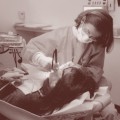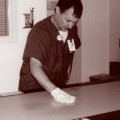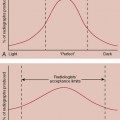CHAPTER 14 On completion of this chapter, you should be able to: • Discuss the impact of medical malpractice on society. • Define tort and explain its several forms in the health profession. • Discuss patient consent rights and the radiologic technologist’s role in ensuring the validity of the consent. • Define respondeat superior and explain its significance in radiology services. • Define res ipsa loquitur and explain how it may apply in radiology. • List seven reasons why a radiologic technologist may be named as a defendant in a malpractice case. • Discuss the steps a radiologic technologist may take to prevent a lawsuit against a health care provider. Torts are not easy to define, but a basic distinction is that they are violations of civil, as opposed to criminal, law.* For this discussion, we can also say that tort law is personal injury law. Torts include specific conditions in which the law allows for compensation to be paid to an individual when that individual is damaged or injured by another. 1. A tort of civil assault can be filed if a patient is reasonably fearful that he or she was injured by the imprudent conduct of the radiologic technologist. If found liable, the radiologic technologist could be held responsible for providing financial compensation to the patient for damages. 2. A civil battery tort would be an appropriate proceeding when actual bodily harm has been inflicted on a patient as a result of intentional physical contact between a health care provider and a patient, again with potential for liability against the radiologic technologist. A health worker cannot touch a patient for any reason unless a valid consent is given by the patient to receive medical care. (The elements that are required for a valid consent are discussed later.) 3. Other forms of intentional misconduct include invasion of privacy; defamation, whether spoken (slander) or written (libel); and false imprisonment. An example of invasion of privacy is when a radiologic technologist publicly discusses privileged and confidential information obtained from the attending physician or the patient’s medical record. An example of false imprisonment would be unnecessarily confining or restraining the patient without the patient’s permission. If during the performance of a radiographic examination, a patient is strapped to the table or similarly confined without having given permission to be so restricted, that patient would have grounds for a charge of false imprisonment. Negligence can be defined as a breach or a failure to fulfill an expected standard of care. Generally, the standard of care required is that degree of care that would be used by a “reasonable person” under the circumstances. For health care professionals, however, the standard of care is modified somewhat and is determined by the degree of care or skill that a reasonable health care professional would exercise under the circumstances. This definition means that the radiologic technologist owes a duty to the patient based on the standard of care that a reasonable radiologic technologist is expected to provide under similar circumstances.* Failure to perform to this expected standard of care will constitute negligence and result in liability. For a health care professional to be found negligent in a court and subsequently held liable for damages, the civil proceeding must establish the following elements: 1. That a duty of care (or standard of care) was owed by the radiologic technologist to the patient 2. That a breach of that duty occurred by the radiologic technologist 3. That the cause of injury was the radiologic technologist’s negligence Each of these elements is discussed below: 1. The standard of care owed to the injured person. The radiologic technologist must exercise the care that a reasonable radiologic technologist is expected to exercise under the same circumstances. If a physician instructs radiologic technologist Boswell to radiograph patient Abbott’s right leg, Boswell has a duty to radiograph Abbott’s right leg properly. If Boswell radiographs Abbott’s right leg, Boswell will have performed as a reasonable and prudent radiologic technologist would have acted under similar circumstances. If, however, Boswell radiographs Abbott’s left leg, Boswell is breaching the standard of care by failing to follow the physician’s directions. 2. Breach of the standard of care. A breach is failure to exercise reasonable care. What if Boswell radiographs the right leg but the quality of that radiograph is not adequate to provide diagnostic information? If a radiologic technologist has the duty to ensure that radiographs are clear and of the highest quality for the physician’s diagnosis, then giving the physician an inadequate radiograph is a breach of the radiologic technologist’s duty. If a patient’s condition deteriorates because the physician could not properly interpret the radiograph, then the patient would have grounds to sue the physician and the radiologic technologist. How inadequate need a radiograph be before a jury would declare the technologist in breach of duty? This question is difficult and is one that would be resolved in court with the assistance of expert witnesses and by the judgment of a jury on a case-by-case basis. 3. The radiologic technologist’s negligence must be shown to be the direct cause of the patient’s injury. The breach of duty must be the factual cause of the injury. If the radiologic technologist has the duty to make sure that a dizzy or semiconscious patient does not fall from the examination table, it would be a breach of that duty if the radiologic technologist left the room. If, on the radiologic technologist’s leaving the room, the patient fell from the table and sustained injuries, a jury hearing the tort action would likely agree that the radiologic technologist’s breach of duty (negligence) caused the injuries; this judgment is reached because leaving the room would be closely related to the patient’s falling from the table. Suppose, however, that the radiologic technologist leaves the room and on return finds that the patient is very upset that the radiologic technologist left the room, although the patient did not fall off the table. Days later, the patient is standing in the hall telling his wife that the radiologic technologist had left him alone while he was semiconscious on the examination table. In describing the incident, the patient becomes upset, faints, and, as a result, fractures an arm. The patient might argue that the radiologic technologist caused the fractured arm. The patient probably would not prevail in court, however, because he or she would have difficulty proving that the radiologic technologist’s action was a “proximate cause” of the fractured arm. If the cause of injury is too remote from the breach of duty (the negligence), even though factual cause seems evident, then the negligence is not the proximate cause of injury. 4. The patient sustains actual injury. A personal injury case or tort will not be successful in establishing liability if no damages occur. If a patient falls from an examination table because the radiologic technologist leaves the room but does not incur any injuries, the patient cannot expect to receive compensation.
Medicolegal Considerations
Torts
Intentional Misconduct
Unintentional Misconduct (Negligence)
![]()
Stay updated, free articles. Join our Telegram channel

Full access? Get Clinical Tree


Medicolegal Considerations






